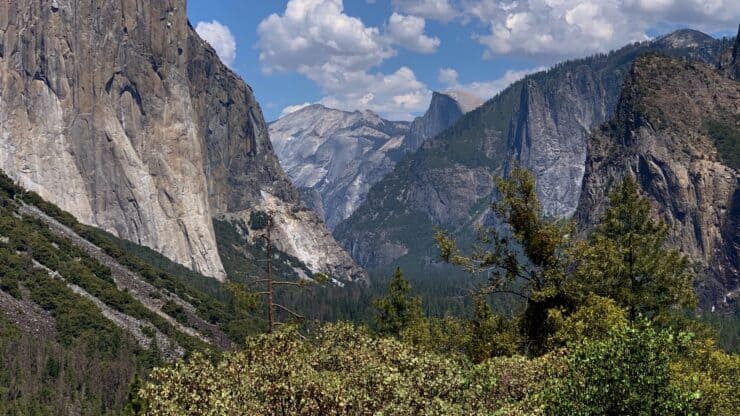

Yosemite Hiking Tips
Most people only experience Yosemite National Park from their car, but the majority of Yosemite is backcountry, which is best explored by hiking. There are hikes for all levels, and these Yosemite hiking tips will help you pick the perfect one and have a great time experiencing it. It's time to leave the car and crowds behind and enjoy Yosemite the way it was meant to be.
- Planning Your Hikes in Yosemite NP
- Dangers & What to Watch Out For
- How To Navigate Yosemite Trails
- Suggested Hiking Itineraries
Most people only experience Yosemite National Park from their car, but the majority of Yosemite is backcountry, which is best explored by hiking. There are hikes for all levels, and these Yosemite hiking tips will help you pick the perfect one and have a great time experiencing it. It's time to leave the car and crowds behind and enjoy Yosemite the way it was meant to be.
Yosemite is pronounced YO-SEM-IT-TEE, not YO-SEM-IGHT.
Planning Hikes in Yosemite
It's important to understand the geography of Yosemite National Park before you start picking hikes to do. For example, if you wanted to hike the Mariposa Grove them Clouds Rest, and then stay in the Yosemite Valley, you'll probably be in the car for about 5 hours. Plan your hikes wisely to minimize driving and maximize outdoor time.
I recommend picking one area per day. Arrive early (like sunrise) to beat the traffic. Do your longest hike first and then add some optional shorter hikes or roadside attractions after that. If you are staying in the Yosemite Valley and want to hike there, you can use the shuttle bus (more later).
Main Areas in Yosemite
It helps to divide Yosemite up into three main areas: Wawona in the south, Yosemite Valley in the center, and Tioga Road to the north. Now there are other areas of the park and you can sub-divide these areas, but for planning your trip as a beginner or intermediate hiker, these are good chunks to start with.
Here are the areas on a map.
| Area | Color | Known For | Signature Hike |
|---|---|---|---|
| Yosemite Valley | Red | Classic Yosemite experience and views | Half Dome |
| Wawona | Yellow | Lush forest with giant sequoia trees and great views from Glacier Road | Mariposa Grove |
| Tioga Road | Blue | Alpine terrain with snow-capped peaks and alpine lakes | Clouds Rest |
Traveling Between Areas
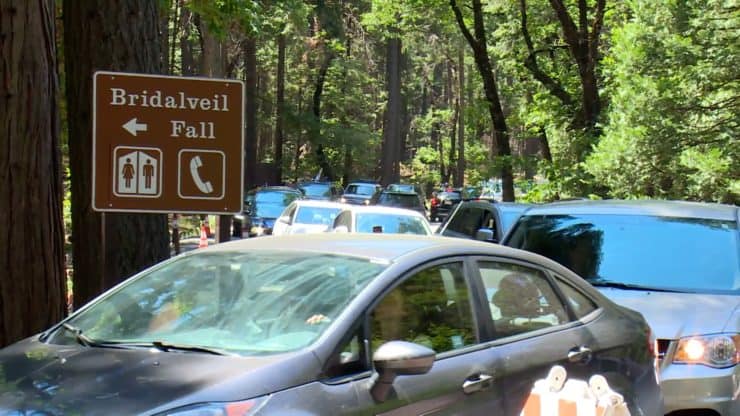
Driving around Yosemite is never quick, even if you have the road to yourself. Most roads are twisty, have a lower speed limit, and are jam-packed with scenery. So just accept it and plan accordingly. Two main culprits make things worse: traffic and slow drivers.
You can read about most road work on the Yosemite road work and Yosemite alerts webpages. Usually road work means that a lane is shut down and you will have to wait for traffic to pass in the other direction. And when there is snow, main roads like Tioga and Glacier can be closed completely.
Most of the time you will be stuck behind other tourists just driving slow and soaking in the scenery. For a majority of people, Yosemite is an experience that revolves around driving and roadside attractions. If you're stuck behind a slow driver, be patient. Most slow drivers get the message when they see a line of cars behind them and then pull over. It's just all part of the deal.
Here's the rough travel times between sections.
- Wawona ↔ Yosemite Valley : 45 mins to 1:30 hrs
- Yosemite Valley ↔ Tioga Road : 1:15 - 2 hrs
- Tioga Road ↔ Wawona : 1:30 - 2:30 hrs
Yosemite Driving Tips
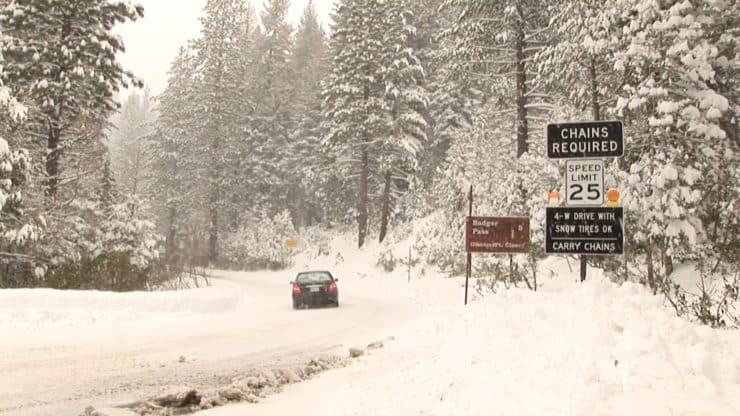
- In the summer (peak season) you can wait up to an hour to enter the park. If you get there before 8am you should get in quickly. If you get to the entrance before they open (usually around 6am) you can just drive in.
- Driving on the Yosemite Valley loop road can be a nightmare, taking up to 2-3 hours just to complete a loop. If you're driving out of the Yosemite Valley to another area, leave very early.
- The worst traffic is between 12 noon and 6pm.
- You can only get gas in Wawona or Crane Flat. There are also gas stations right outside of the park in El Portal (close to Yosemite Valley) and Lee Vining (east part of Tioga Road). I usually fill up before I enter the park because it's cheaper.
- Park Rangers actively look for speeders and people parked illegally in all areas of the park.
- Tioga Road has no food options. Wawona is limited. The Yosemite Valley has some grocery stores and restaurants. If you're traveling out of the Yosemite Valley, you're better off bringing your own food. Some parking lots have bear boxes to store food. If the parking lot has them, use them.
- Only small areas of the Yosemite Valley have (so-so) cell service. If you want to use a mapping app on your phone, make sure you have some form of offline maps stored.
- If you don't want to drive into the park, you can take public transportation. Public transportation between areas of the park can be tough. The YARTS bus that you take into the park also has some stops within the park.
Want to really get off the beaten path and escape the crowds? Check out the day hikes in the Hetch Hetchy area, in the northwest corner of the park.
Yosemite Valley Shuttle Bus
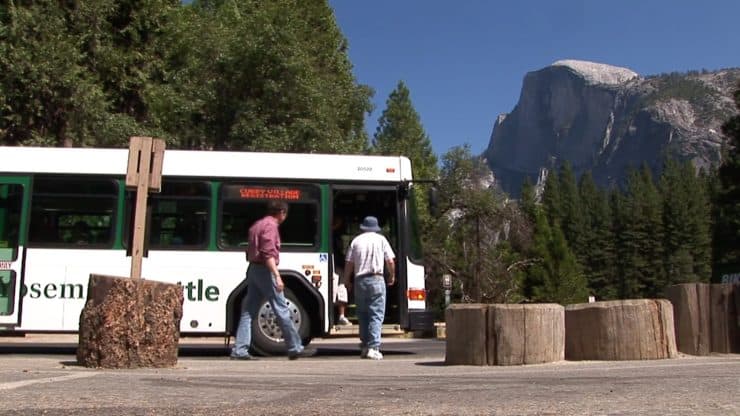
If you are staying in the Yosemite Valley, the free loop shuttle bus is a great asset. It basically does a continuous loop around the Valley, stopping at some major trailheads. With the shuttle you can hit the Mist Trail, Half Dome, Yosemite Falls, Mirror Lake, and many others. There are also other shuttle busses in the park. The only downside of the shuttle is its limited hours, but it should be able to get you to a trailhead early enough to beat most crowds.
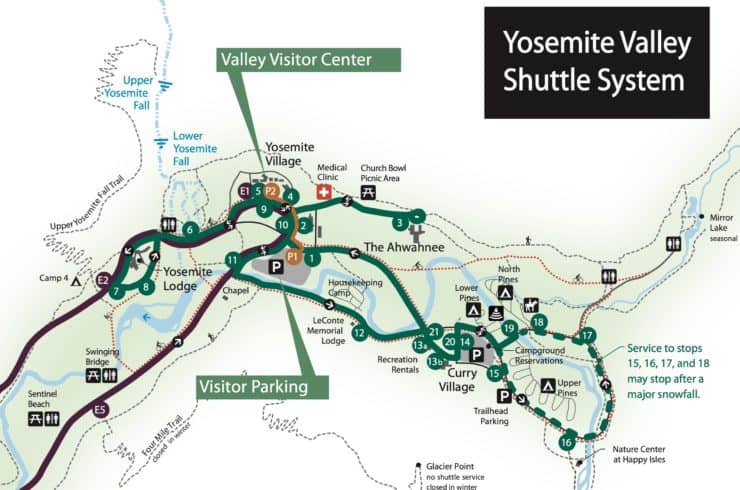
Picking a Place to Stay
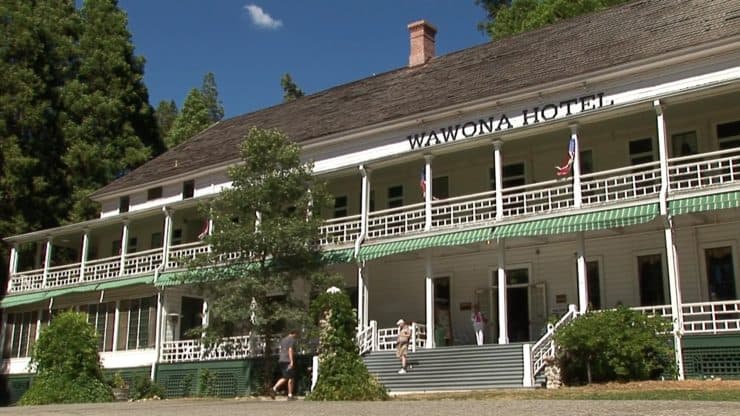
I'm not going to talk about all the hotels here; you can check out the reviews on other sites. What I will do is give you some general recommendations for staying somewhere convenient for hiking.
- Book as far in advance as possible. Lodging, especially in the Yosemite Valley, is the hardest thing to get. If the Valley is full, try the area around El Portal which usually has better availability and is reasonably close to the park.
- Even though it's expensive and hard to bag, staying in the Yosemite Valley is your best option and worth the extra cost. You'll be central to all the great hikes and can enjoy the iconic scenery when you're chilling out. If you get out into the Valley early, you can usually have it mostly to yourself.
- There are some last-minute options and occasional cancellations/openings in the Yosemite Valley. I've seen people get last-minute accommodation in person at Curry Village; it is possible but a long shot.
- If you stay outside of the park, there are chain hotels and chain restaurants. Just account for a potentially long drive in and out every day. Mariposa and Oakhurst are the two big towns with this type of accommodation. Beware of hotels as far out as Fresno with "Yosemite" in their name. Fresno is pretty much the opposite of Yosemite.
- If you have a backcountry permit (for camping) - you can stay in one of the "backpackers campgrounds" without any reservations for one night before and one night after your permit. This is an easy way to score a prime location in the Valley or Tuolumne Meadow to explore.
Yosemite Weather
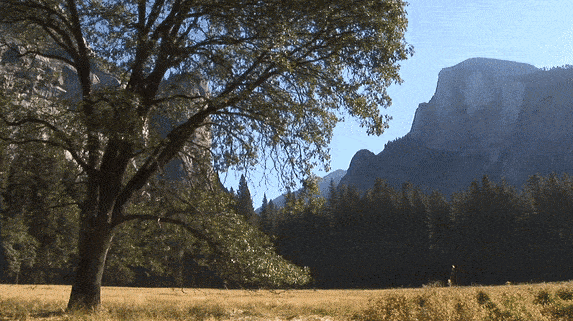
To start, Yosemite has seasons. In the summer it can be 100F (not very nice) and in the winter it can be well below freezing. And then there's also the different sections of the park, which sit at different elevations and can also feature micro-climates because of their location. Finally, add the fact that you are in the Sierra Nevada Mountains, and you can have quickly changing conditions. So always check the forecast of the area that you are hiking in before heading out.
- Wawona Forecast (4000 feet)
- Yosemite Valley Forecast (4000 feet)
- Tioga Road Forecast (Tuolumne Meadows at 8600 feet)
In general, here's the hiking lowdown for reach season.
| Season | Temps | Conditions | Gear |
|---|---|---|---|
| Winter | 20 to 60F | Cold and wet with many roads and trails closed - open trails can have ice and snow | microspikes - trekking poles - winter hiking gear |
| Spring | 32 to 75F | Melting snowpack - raging streams - some trails and roads still closed - wildflowers | hiking footwear for muddy conditions - microspikes - trekking poles - outerwear for changing conditions |
| Summer | 40 to 100F | ideal conditions but crowded - can get very hot at lower elevations - low-to-no rain in most sections - occasional afternoon thunderstorms in the mountains | summer hiking gear - rain shell - hydration pack |
| Fall | 45 to 85F | ideal conditions - streams drying up - can be early snowstorms closing roads and trails | hydration backpack - clothes for changing conditions |
In the winter it's not uncommon for Wawona and the Yosemite Valley to be open with pleasant temperatures, while Tioga Road is closed and covered in snow.
Wildfires
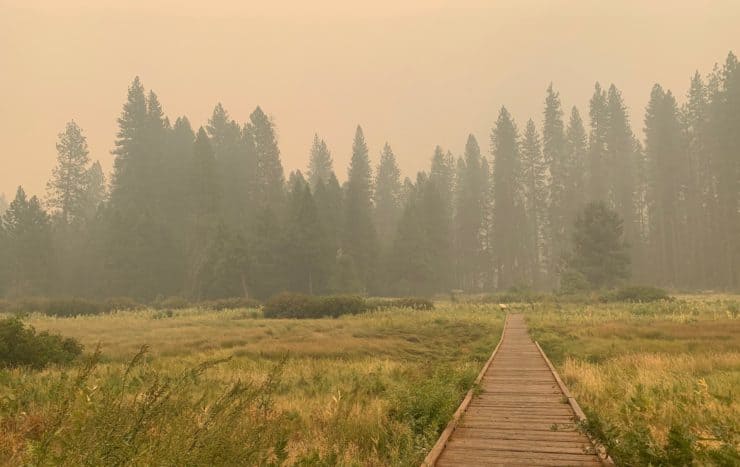
There's not much you can do about wildfires and the conditions they cause, but I mention it because it's worth checking out before you go. More and more wildfires are a part of California's summer and fall seasons. If there are wildfires and haze, it's not going to be fun hiking and could also be bad for your health. If you've traveled a long way to visit Yosemite and the conditions are like this, you might want to consider accepting a loss on your accommodation costs and heading somewhere else like the Central Coast of CA, Oregon, or Utah.
Some good resources are:
- Yosemite Webcams will give you an idea of the visibility
- Is There a Wildfire On My Hike? Wildfire Tips for Hikers
Hiking In Yosemite
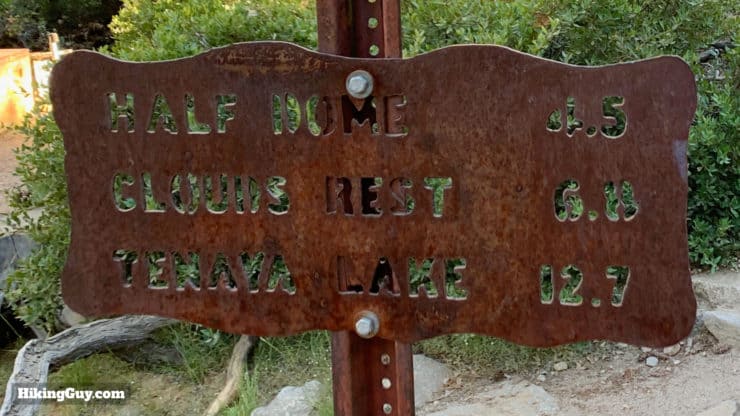
- Always check the park alerts page before you head out the door. Sometimes roads, trailheads, and trails can be closed.
- Pick a hike that's easier than you think, and if you are on the hike and it's too hard, turn around. Most emergencies in the park happen when people push past their limits or are unprepared. Heatstroke, dehydration, and aggravation of pre-existing conditions like heart problems are common.
- Don't just look at the distance on a hike, but also look at the total ascent, which is the total amount of climbing (up and down). 1050 feet is about the same as climbing all the stairs to the observation deck on the Empire State Building (86th floor).
- You only need a permit to hike the last section of Half Dome; otherwise you don't need a permit for any day hike. If you want to backpack overnight in the wilderness, you need a wilderness permit.
- Leave at sunrise to beat the crowds. At 9am the popular trails are usually crowded.
- Most trailheads and some trail junctions have primitive pit toilets. That's a private toilet that you can sit on, but that doesn't flush. There's usually toilet paper and they generally smell horrible.
- Get a National Geographic trail map of the park, which is easy to read and makes it easy to navigate the park.
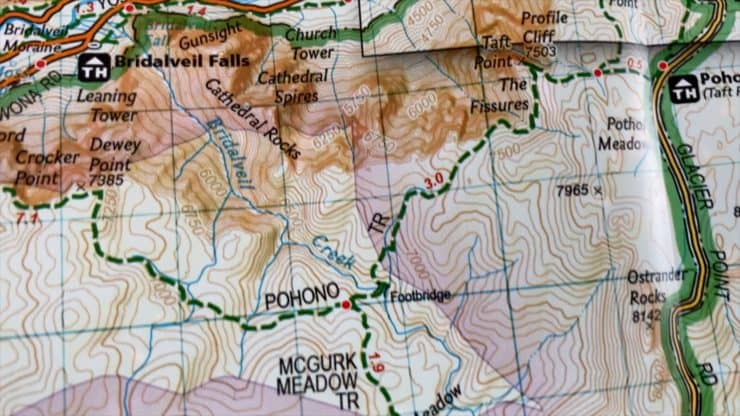
The National Geographic map is nice because it has mileages for each section of trail - You generally won't have cellular service, so don't count on hiking apps unless you can download the maps for offline mode. Make sure you put your phone in airplane mode to save your battery.
- There are no grizzly bears in the park, only black bears. They may root through trash or food scraps, but otherwise avoid humans. If you see a bear, make lots of noise and try to scare it away. If it doesn't move, give it space and let it pass. Don't feed the bears; bears who are fed by humans are put down. Bear spray is not allowed in the park.
- If you leave your backpack unattended, rodents and birds will try to break through it and get at your snacks.
- Aside from people pushing past their limits, the other most dangerous situation is going in the water or close to an edge, especially on wet granite. People get swept away in swifter than expected currents. People slip on wet granite and fall off cliffs. It happens more than it should. Not worth it.
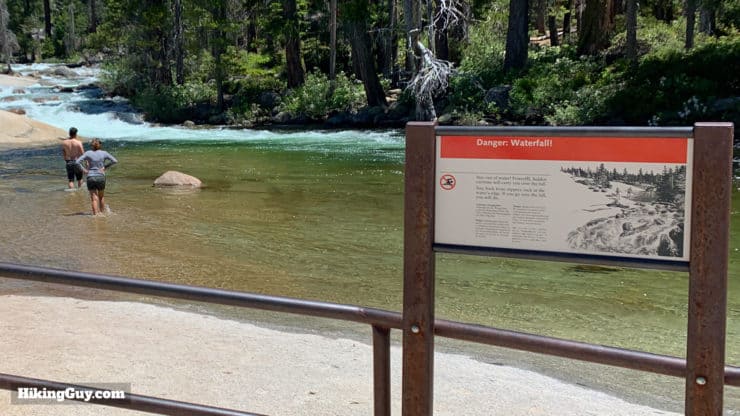
Here's your classic Yosemite scene: people ignoring a warning to not go in the water. If they slip on the slick granite and can't pull themselves out... 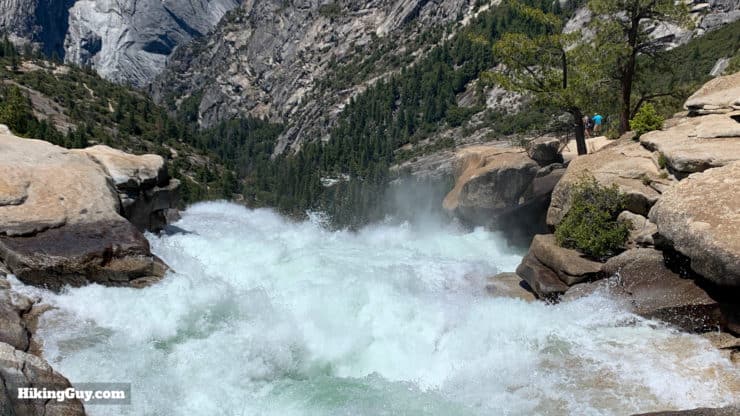
... they have about 10 seconds before they plunge 600 feet down this waterfall. - If you've come from sea level, the thinner air at the higher elevations of Yosemite can make it harder to hike. Your body doesn't get as much oxygen.
I highly recommend watching the Ken Burns National Parks documentary before you arrive. Yosemite plays a big part in the series and having an understanding of the history of the area makes the experience much richer.
Gear Recommendations
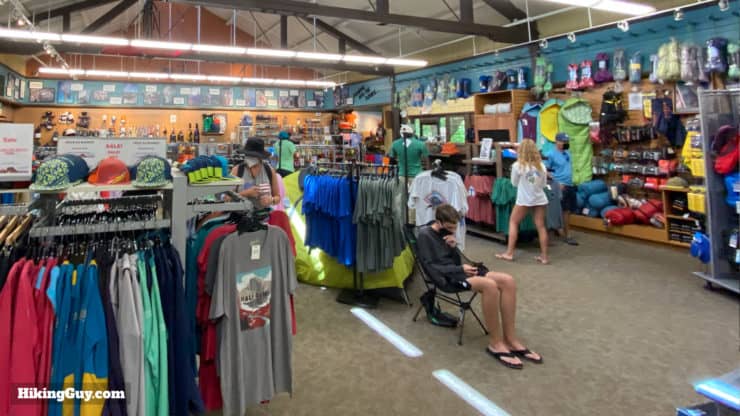
- Always carry a printed map, even if you have a GPS or cell phone. Batteries die.
- Get a free hiking GPS app like GaiaGPS or AllTrails and use it in offline / airplane mode.
- There's no cell service in most of Yosemite, so if you want to hit SOS, consider investing in a satellite communicator that lets you send texts and call for help without a cell signal. It's probably only worth it if you plan on hiking regularly though.
- The simplest and most useful thing you can bring is a headlamp or flashlight. There are lots of rescues involving people stuck out after dark who don't know how to get back. Check the batteries before you go and bring spares.
- Follow the water recommendations for your hike. In the Yosemite Valley you can fill your water from spigots without treating it. If you are refilling from a stream or spring, you must filter your water. If you don't have a hydration backpack, carry two 1.5L Smartwater bottles and refill them as needed.
- It pays to have good footwear. Trails can be dirt, slick granite, sand, or mud, and there can sometimes be stream crossings.
- Trekking poles can be handy on the long climbs and steep descents.
- Bring an extra layer and rain shell if you are going up in the mountains. The weather can get chilly and thunderstorms can pop up quickly.
- Keep a few energy bars or snacks in your pack in case you run out of steam. The hikes in Yosemite are probably harder than you think; getting an energy boost can help.
- Mosquitos and flies can be intense, especially on Tioga Road. Bring insect repellant and get a cheap bug head-net. The head-net looks silly, but is a lifesaver if bugs are swarming around your face.
- You can see my full and current gear recommendations here.
Try your gear out on hikes near home before using it at Yosemite. The trailhead is not the place to figure out how something works or deal with something that doesn't fit correctly.
An Easy Way to Say Thank You For This Guide
Yosemite Hiking Itineraries
1 Day
- Focus on Yosemite Valley
- Leave early and do the Mist Trail, one of the signature hikes at Yosemite.
- Have lunch in the Yosemite Valley.
- If you have the energy, climb Four Mile Trail (and back) for views, or Upper Upper Yosemite Falls for the classic waterfall.
- If you're pooped from the Mist Trail, try the hike to Artist's Point or just enjoy strolling on the paths along the Merced River and meadows.
2 Days
- Everything on Day 1
- Head up to Tioga Road and hike Clouds Rest, another signature hike.
- Relax on the banks of Tenaya Lake and picnic. You can even hike around it if you want.
- Enjoy the giant sequoias at Tuolumne Grove.
3 Days
- Everything on Day 1 & 2
- Drive on Glacier Point Road and do the hikes to Sentinel Dome and Taft Point.
- Have lunch at Glacier Point.
- Visit the Mariposa Grove of Giant Sequoias, which feels like Sequoia National Park.
Hikes Away From Crowds
- Any hike at sunrise.
- North Dome
- Artist Point
- Mirror Lake
- Chilnualna Falls
Easy Hikes for Beginners
Trying to get a Half Dome permit without any luck? Try North Dome or Clouds Rest instead.
Need More Info?
- Have a question about the guide? Join my Patreon and ask me a question.
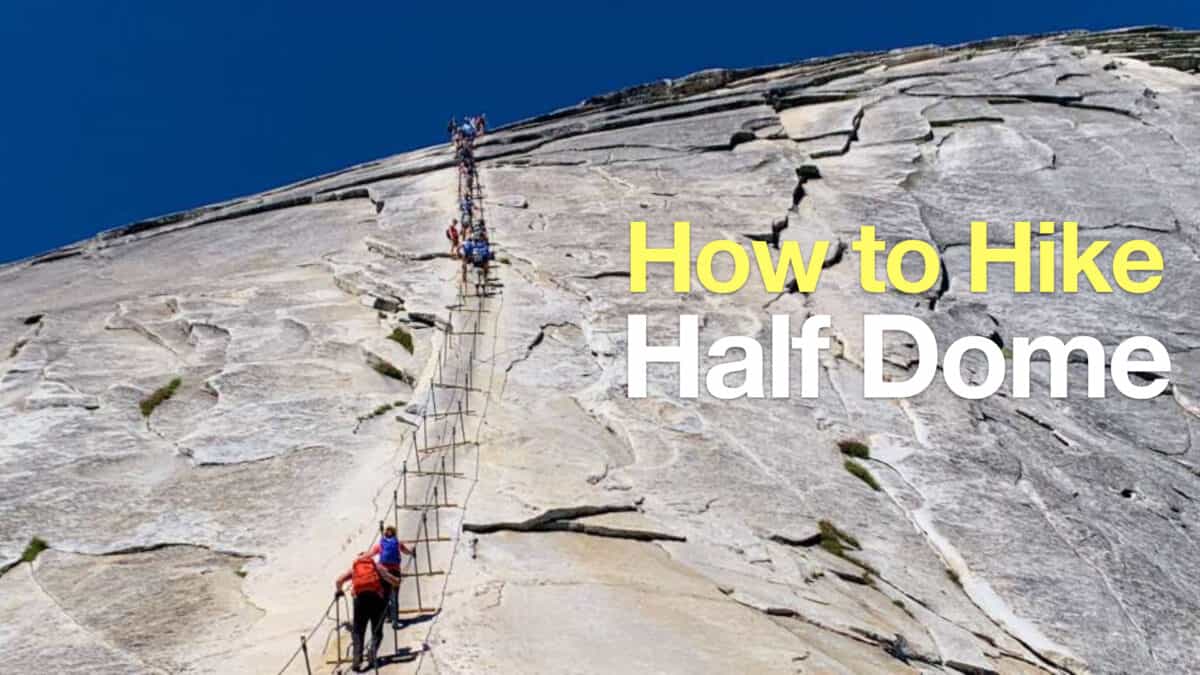 How To Hike Half Dome
How To Hike Half Dome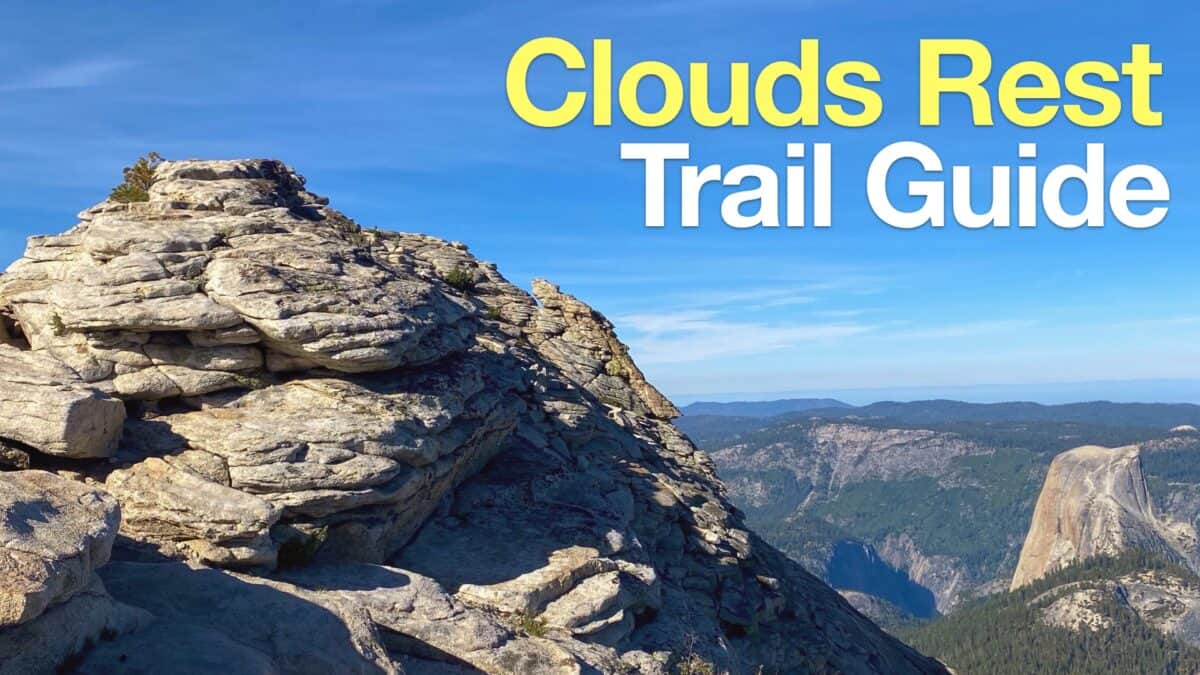 Clouds Rest Hike Guide
Clouds Rest Hike Guide Upper Yosemite Falls Hike
Upper Yosemite Falls Hike Four Mile Trail Hike Guide
Four Mile Trail Hike Guide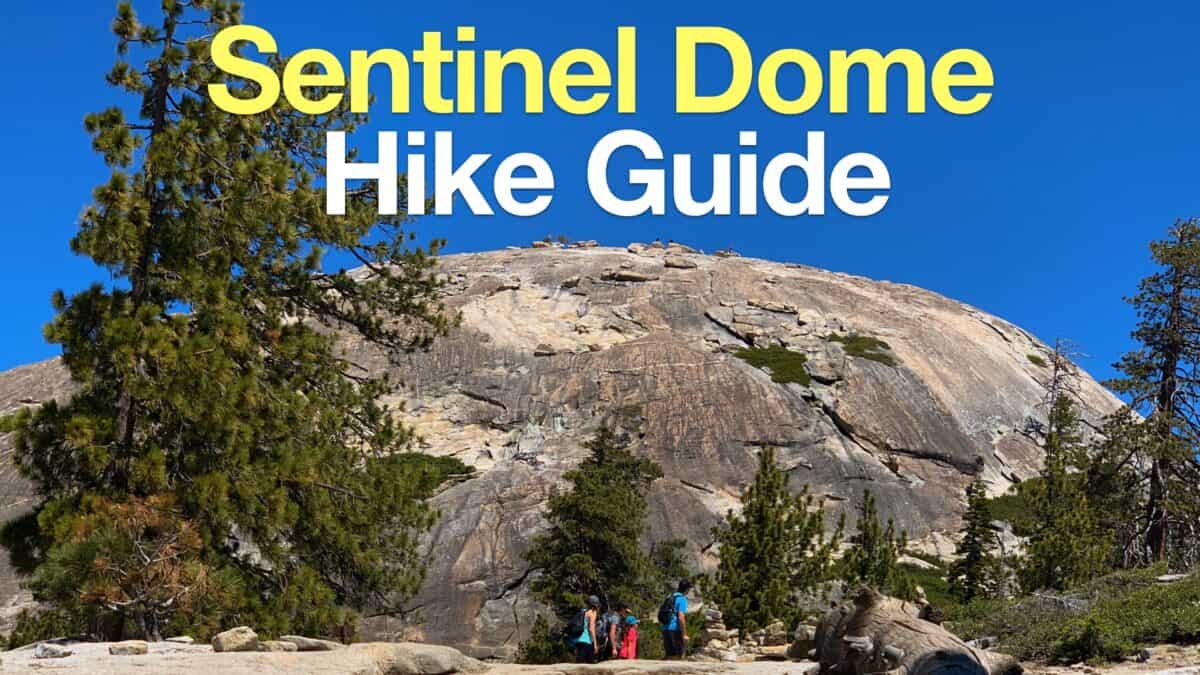 Sentinel Dome Hike
Sentinel Dome Hike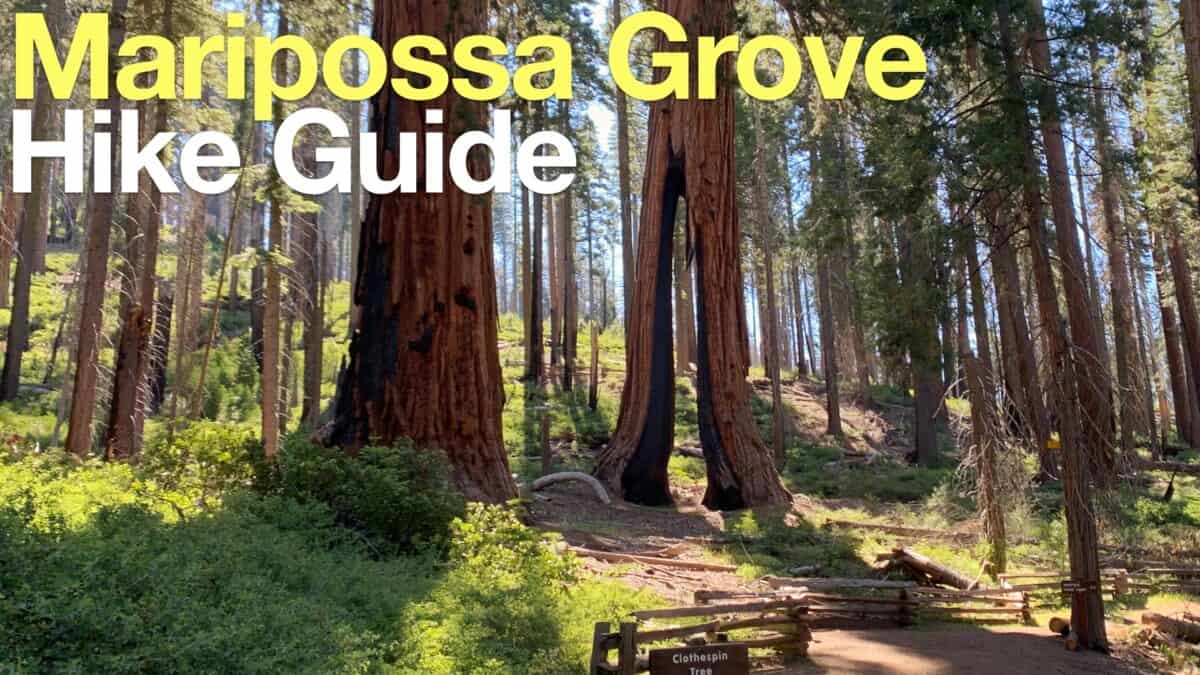 Mariposa Grove of Giant Sequoias Hike Guide
Mariposa Grove of Giant Sequoias Hike Guide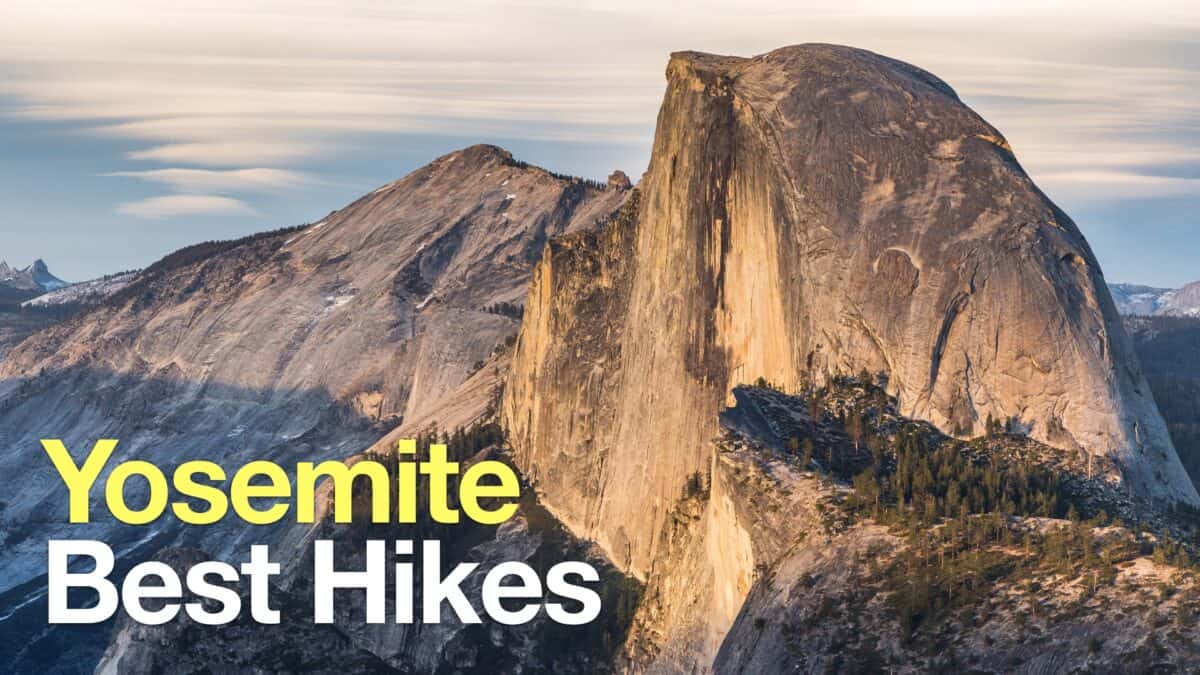 Yosemite Hikes
Yosemite Hikes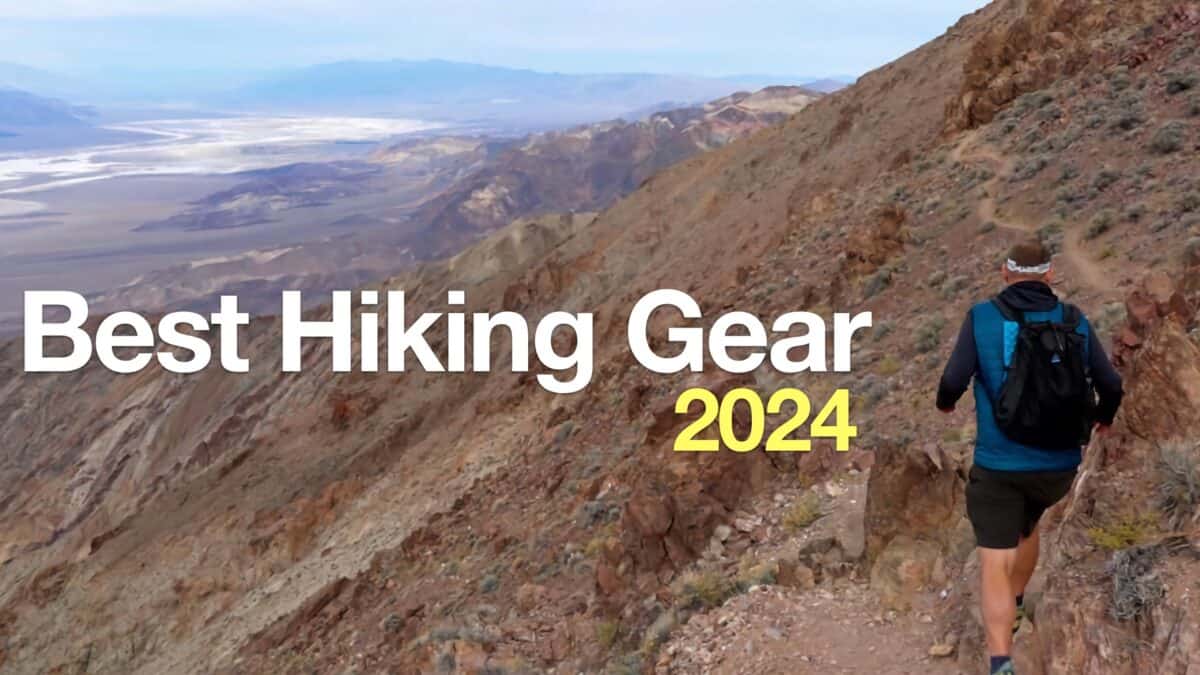 Best Hiking Gear 2024
Best Hiking Gear 2024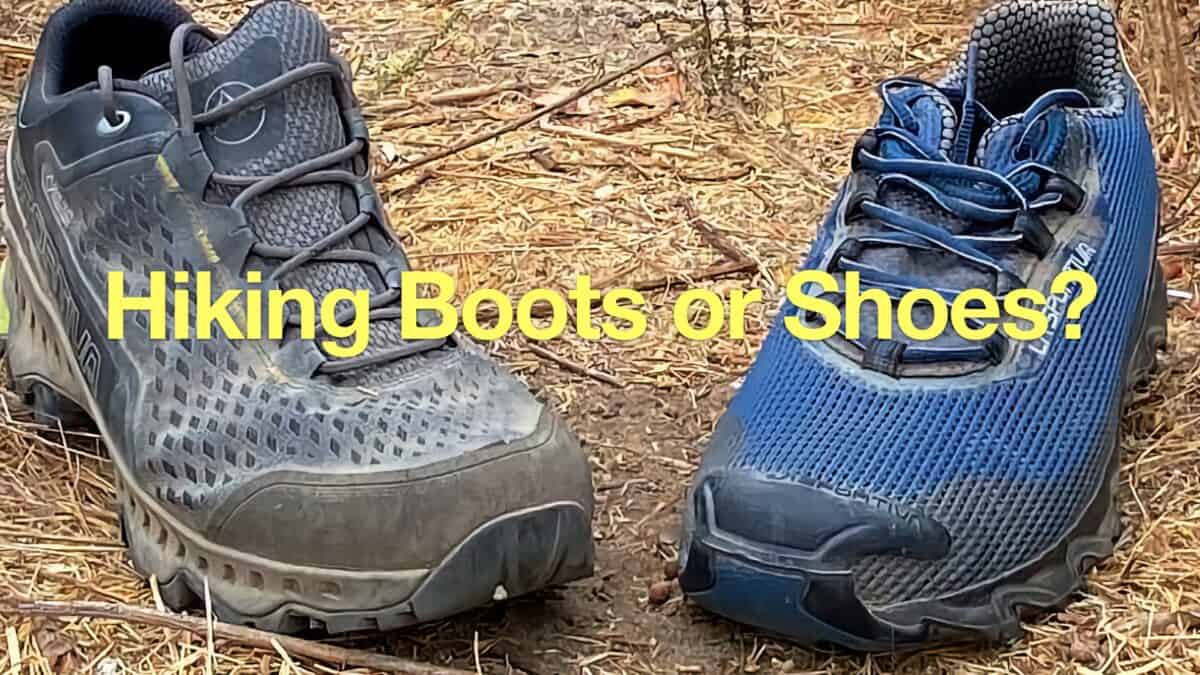 Hiking Boots or Shoes: Do I Really Need Hiking Boots?
Hiking Boots or Shoes: Do I Really Need Hiking Boots? When to Hit SOS on inReach
When to Hit SOS on inReach